What's the Deal with King Harald Bluetooth?
So much of Denmark's Viking history is all about this one man
Unless you’re a Viking nerd like me, you’ve probably never heard of Harald Bluetooth, or to be more correct about it….Harald Gormsson. He was the king of Denmark from c. 958 to 987, and his actions mark important milestones for the country including in the birth of the Danish monarchy — a dynastic line that stretches all the way to the current monarch, Queen Margrethe II.
Bluetooth was his nickname and we don’t know why. Perhaps dental modification like we know some did during the Viking Age, or maybe just a case of poor dental hygiene, or even a mistranslation of another word. But whatever the case may be, this man casts a gigantic shadow over the Viking Age history of Denmark and, as you will note from the photo above, is still casting that shadow on us even today.
He was the son of King Gorm, hence why his real second name is Gormsson in the patronymic tradition of Scandinavia which continues to this day. I knew about Harald before coming to Denmark because I teach a bit about him in my Viking History course. Heading to the royal site at Jelling in central Jutland was a major bucket list goal for this trip, and it was awe-inspiring to see. But I also went to a couple other sites that were instrumental to his reign and expressions of the power he ostensibly held over Denmark and parts beyond. Even though I know about this history, somehow being here in the place where he ruled makes his influence loom much larger than I expected.
First we went to Trelleborg, about an hour’s drive west of Copenhagen, where the remains of a ring fortress commissioned by Harald still stands.
What you’re looking at above is a model of the fortress — which served as a military encampment/garrison — including the earthen ring, moat area, and the longhouses constructed both inside and outside of it. The earthen ring had four openings, each at the cardinal points on the compass. The whole thing sits out in the middle of a farmer’s field in what feels like the middle of nowhere, except when you recognize its proximity to waterways.
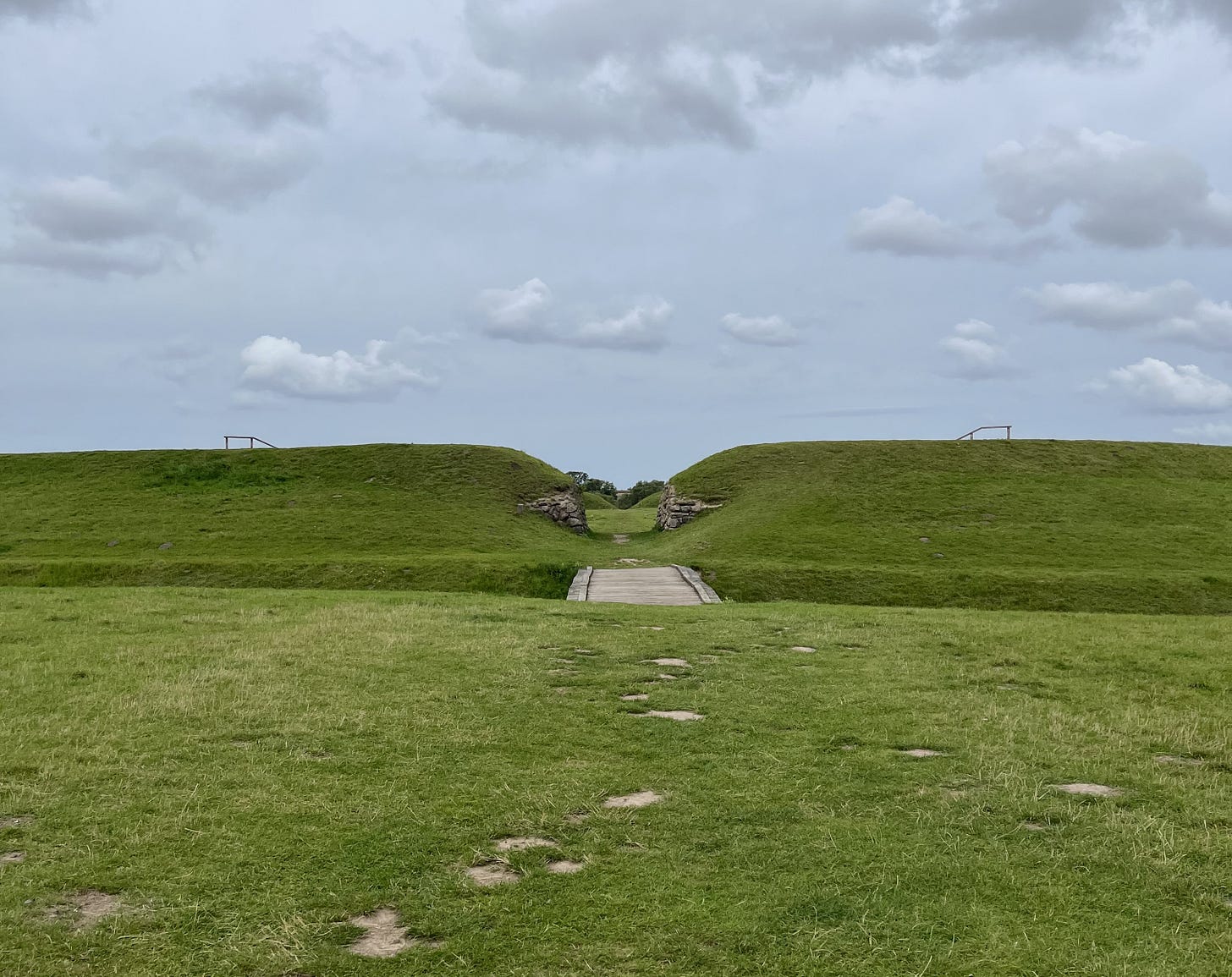
The constructions at the site, including an interpretation of one of the longhouses, give a glimpse of how things looked. The ring around the fortress is almost 450 feet in diameter (136 m). This place took some time and resources to build.
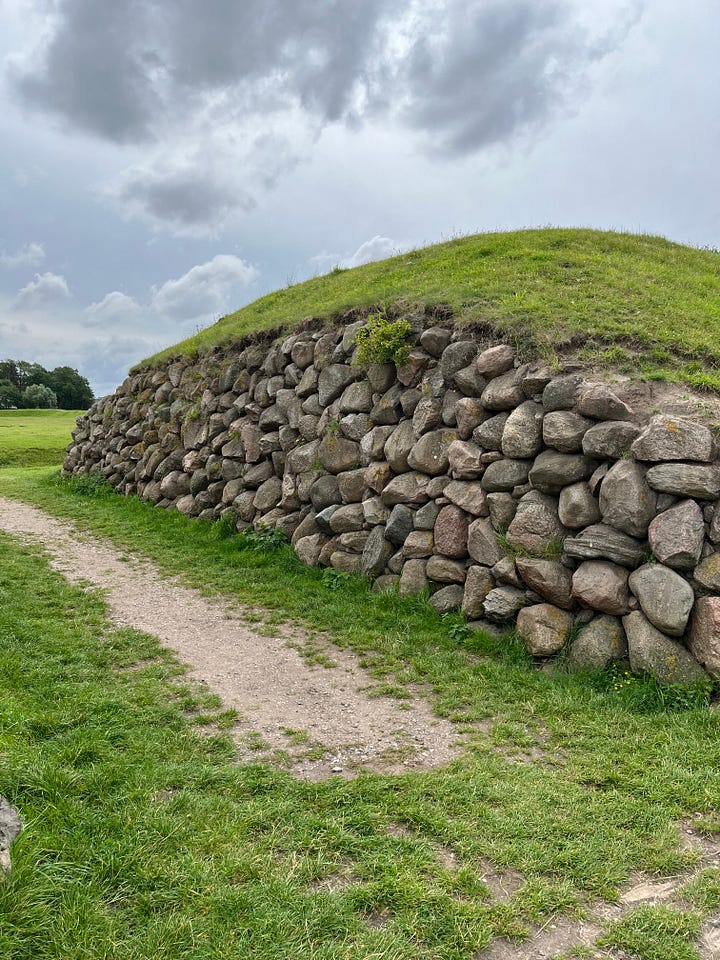
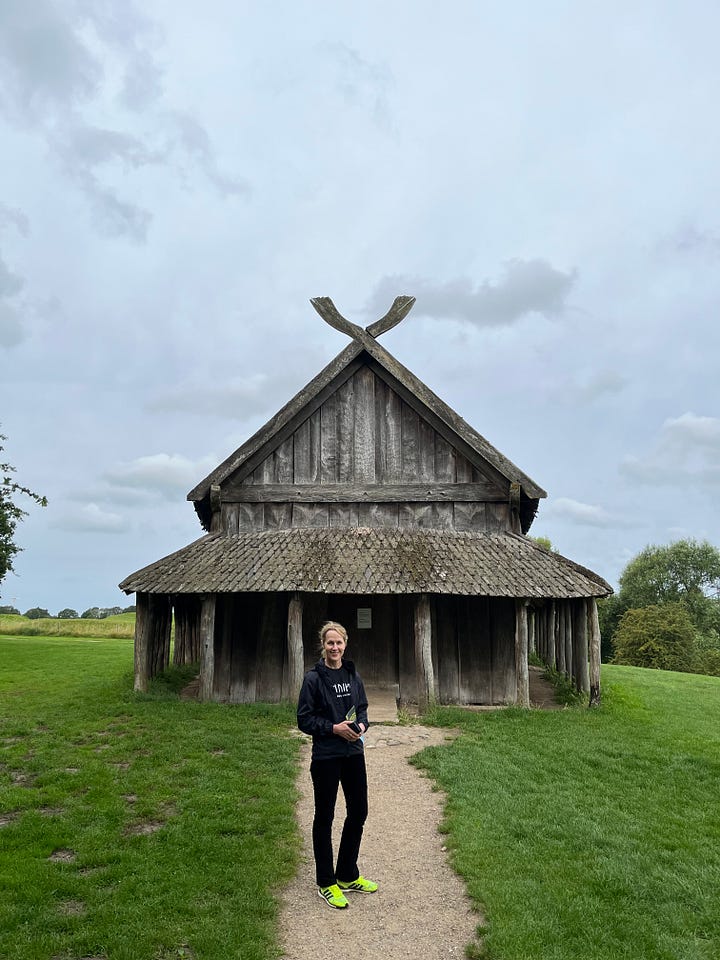
About 2-1/2 hours away from Trelleborg, in the northern part of Jutland, lies another of Harald’s fortresses at Fyrkat. Similar in layout to Trelleborg, it is almost 400 feet in diameter (120 m) and also features a rebuilt longhouse.
As you can see in the image below, the cutout openings in the earthen berm that encircles what was the encampment are also strategically laid out based on the compass. The ring berm is approximately 15-20 feet (4-6 m) tall.

It is interesting, in the silence of the rural areas today, to stand in the circles and try to imagine the bustling nature of life there with buildings situated close together in specific configurations (nothing random happening here) and several hundred soldiers and men, women, and children tending to their survival and the protection of Harald’s realm.
Trelleborg and Fyrkat are two of five known ring fortresses built during Harald’s reign roughly around 980 CE. The others are also likewise situated in areas that seem so oddly off the beaten path for a modern traveler, but when you put your mind to life in the Viking Age and think of modes of transport that prevailed then, the placing of these sites starts to make more sense.
Scholars now believe that Harald, who considered himself a unifier of sorts in Scandinavia (more on that below), was a strong king but under pressure from many directions including Norway in the north and the Ottonian Empire in the south. These fortresses were strategic defense initiatives.
Defensive fortresses aside, for my money the real show of Harald’s power lies at the royal site in Jelling, again a small village seemingly in the middle of nowhere. Jelling in central Jutland — now a UNESCO World Heritage site — was a seat of royal power, including that held by Harald’s father King Gorm the Old. But Jelling is where we have the first recorded evidence of Harald staking his claim to being the king of Denmark and Norway. The famed Jelling rune stone, erected by Harald around the year 965 CE, with its runic inscription tells the story.
This giant stone is carved on all sides, not only with the runes but also decorative imagery. The stone reads:
King Harald ordered this monument be made in memory of Gorm, his father, and in memory of Thyra, his mother; that Harald who won for himself all of Denmark and Norway and made the Danes Christian
Here, Harald is clearly taking credit for bringing Christianity to the parts of Scandinavia that he controls and asserting his power over Norway and Denmark. We know that as powerful as he was, his influence over those areas was tenuous, and also that Christianity had already begun to seep into Denmark earlier than 965, so this stone can be read as something of a propaganda piece where Harald is putting his stamp on things and sending a notice to all potential challengers or rivals. This is a Viking Age power play writ large and in stone.
The stone also represents a couple of “firsts.” It is considered to be Denmark’s “birth certificate,” because it is the first time the polity (nation-state) known as Denmark is mentioned anywhere in writing. The image of Christ is also a first, being the earliest known depiction of him anywhere in Scandinavia. The original stone was painted, and the image below gives a sense of how it appeared in its day. These two “firsts” represent deep aspects of Denmark’s history and are combined in the Danish passport to this day.
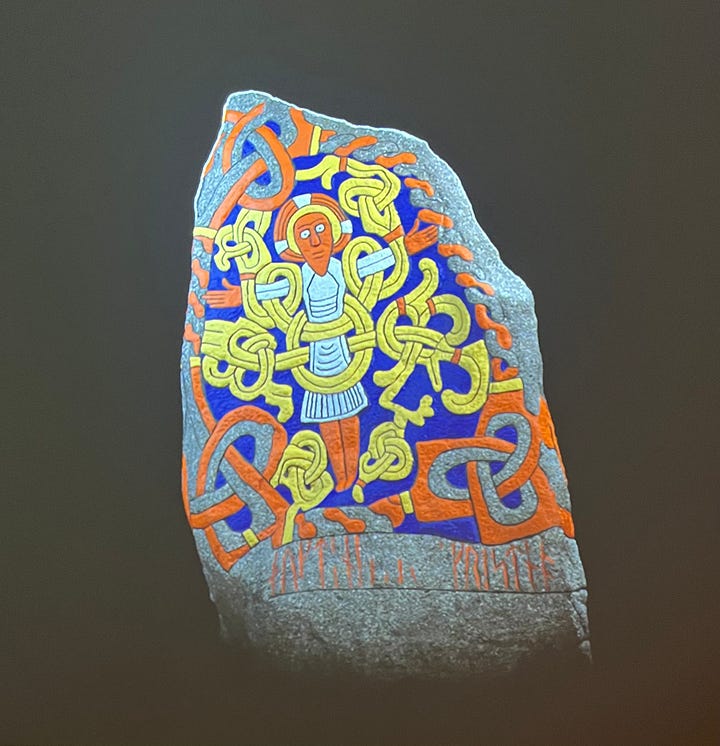
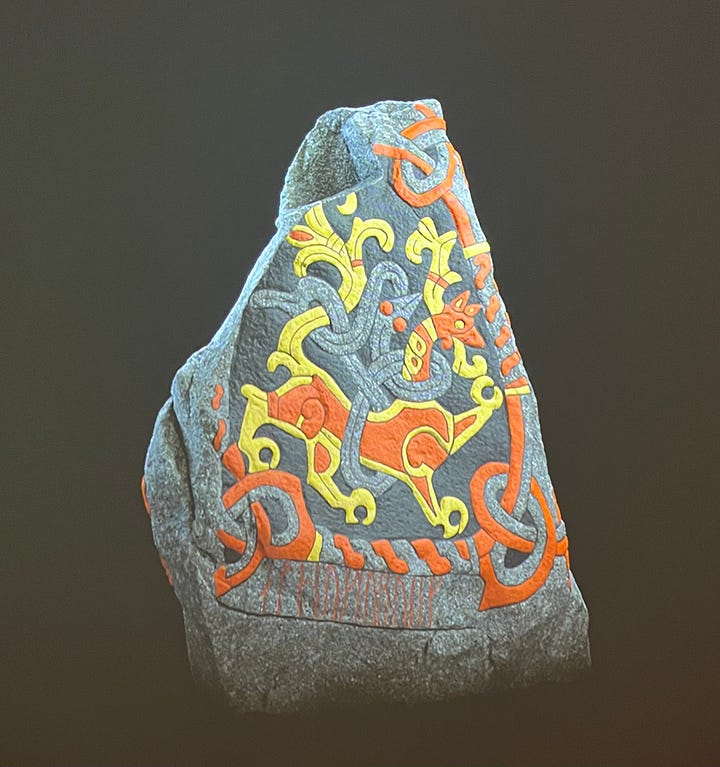
Harald’s stone sits next to another smaller stone that was commissioned by King Gorm for his wife’s memory. In the inscription he refers to his Queen Thyra as “Denmark’s ornament.”
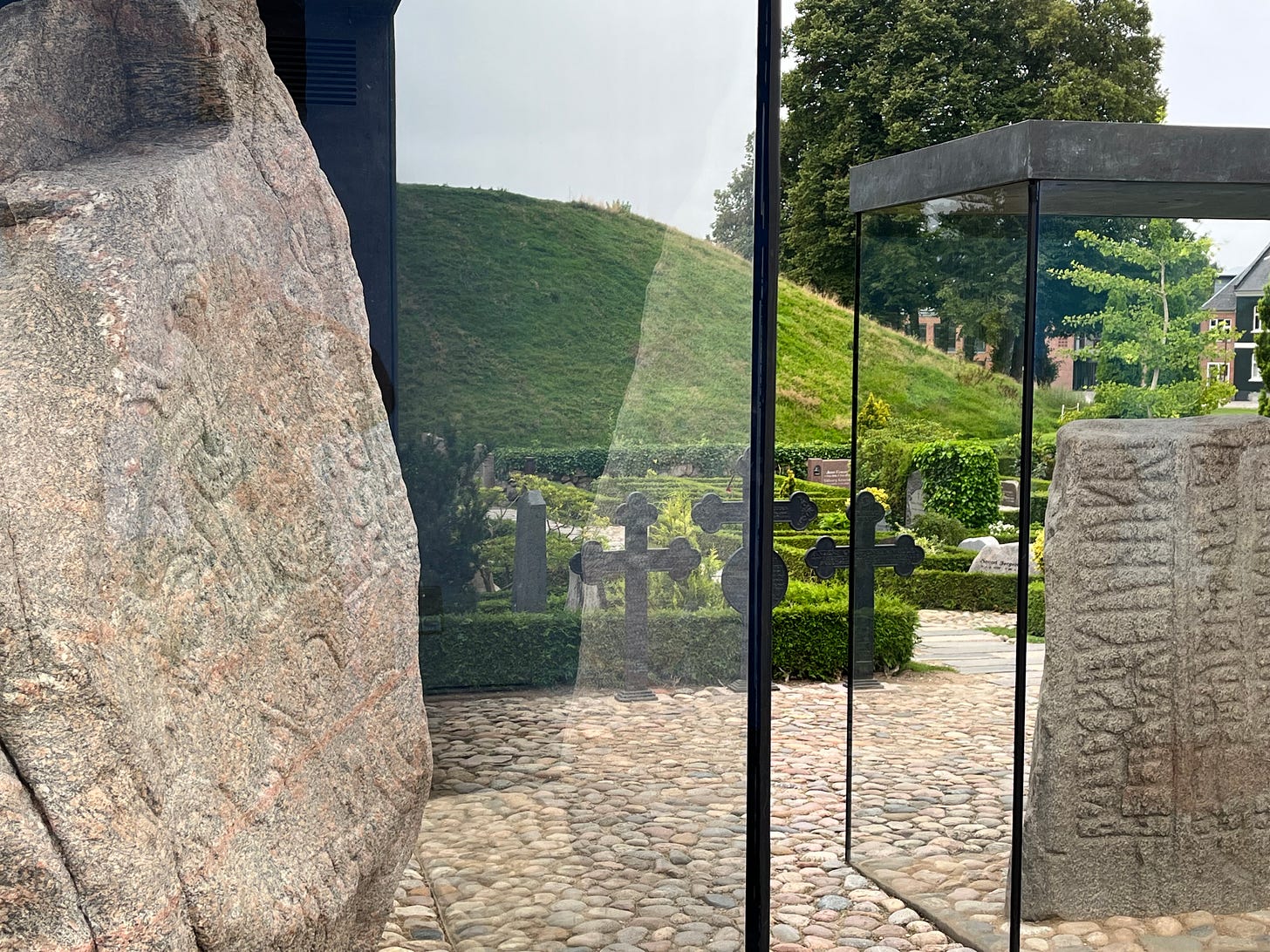
Both of these stone monuments sit between two even larger monuments — giant mounds, one of them a double burial believed to have been erected by Harald for his parents (the bodies were removed during the Viking Age). And they sit in an even larger monument: a stone ship setting, the type of which I discussed in my posts about Lindholme Høje and Glavendrup, and the largest ship setting in all of Scandinavia ever found with an original length of almost 1,200 feet (360 m)! Did I say Jelling is all about statements of power??….
In the diagram of the entire complex above you can see the North Mound at the center, situated between two burial grounds (the rune stones are between the two mounds), and the South Mound at the bottom. The North Mound predates the Viking Age, but was enlarged by Harald during that time. The South Mound was erected during his reign. You’ll also note the outline of the large ship, with its “prow” on the north end. The North Mound sits in the middle of the “ship” stone setting.
These are but a few monuments to Harald’s reign and influence in the history of Denmark; there are more that unfortunately I didn’t have time to see. But the impression I got was crystal clear — Harald Bluetooth almost defines the Viking Age for this country. And as you can see by the image at the beginning of this post, his reach extends far beyond Denmark’s borders in time and space.
In the 1990s, one of the inventors of Bluetooth wireless technology decided that Harald’s role in unifying parts of Scandinavia was a model for what their invention did by joining different forms of technology. They combined the runic “H” and “B” to unify them into what’s known as a bind rune, paving the way for Harald Bluetooth’s name to become a symbol instantly recognizable the world over.
For Harald, this is very, very good news. We know from plenty of written sources that a hallmark of Viking Age culture — particularly for the warrior elite — was the desire to do big things and be remembered for them forever. Check, and check in Harald’s case. Job done.





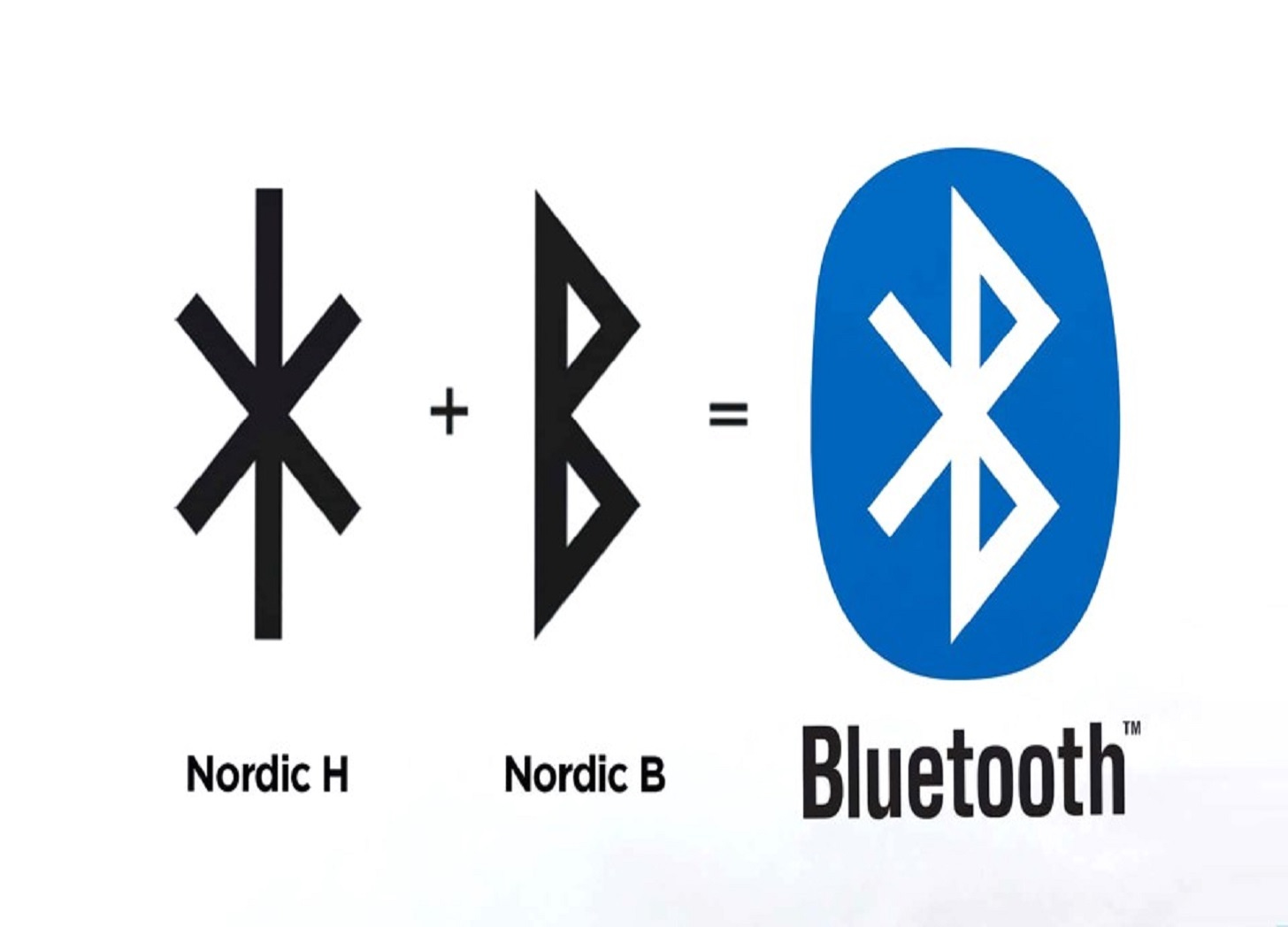
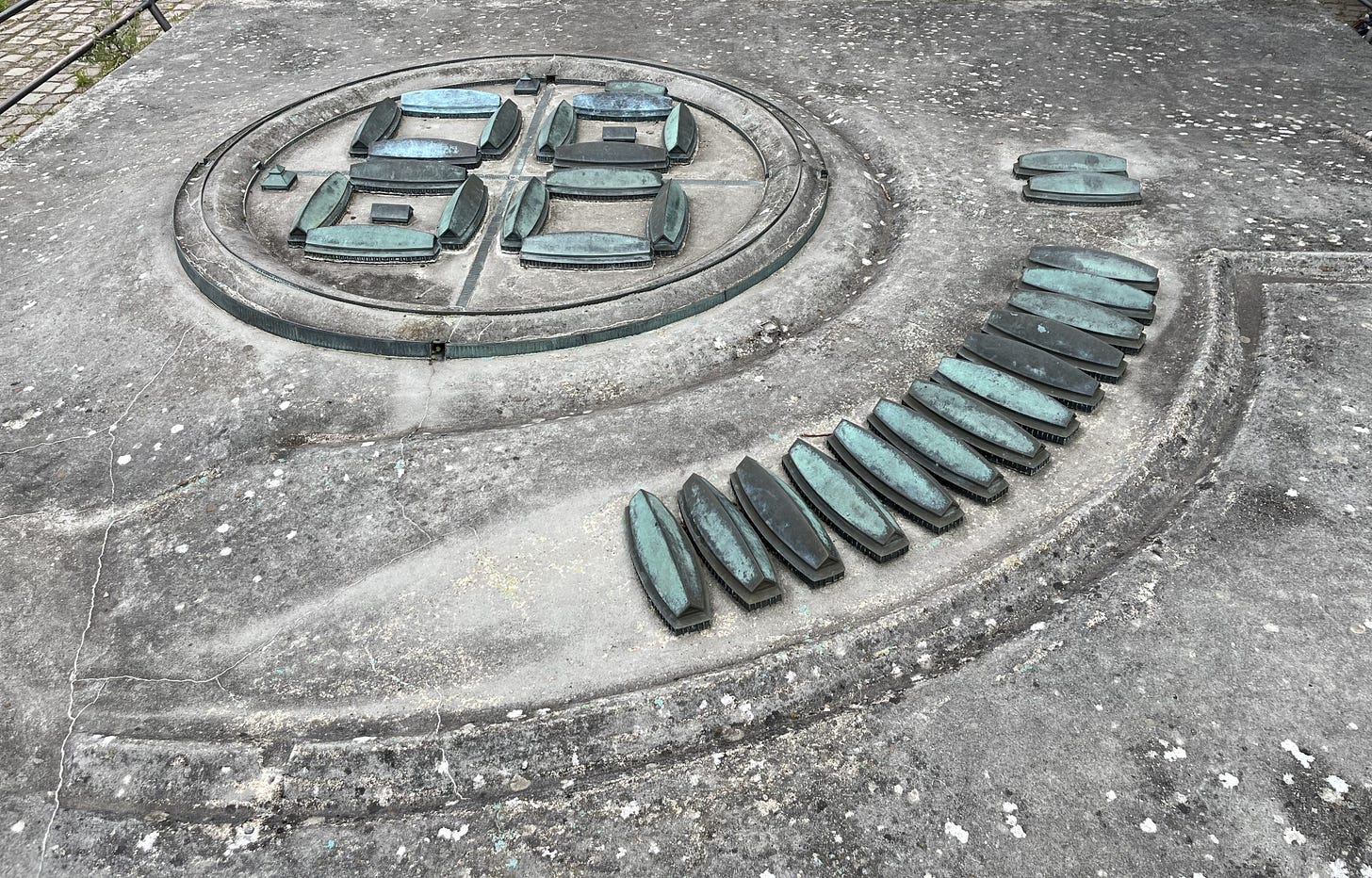
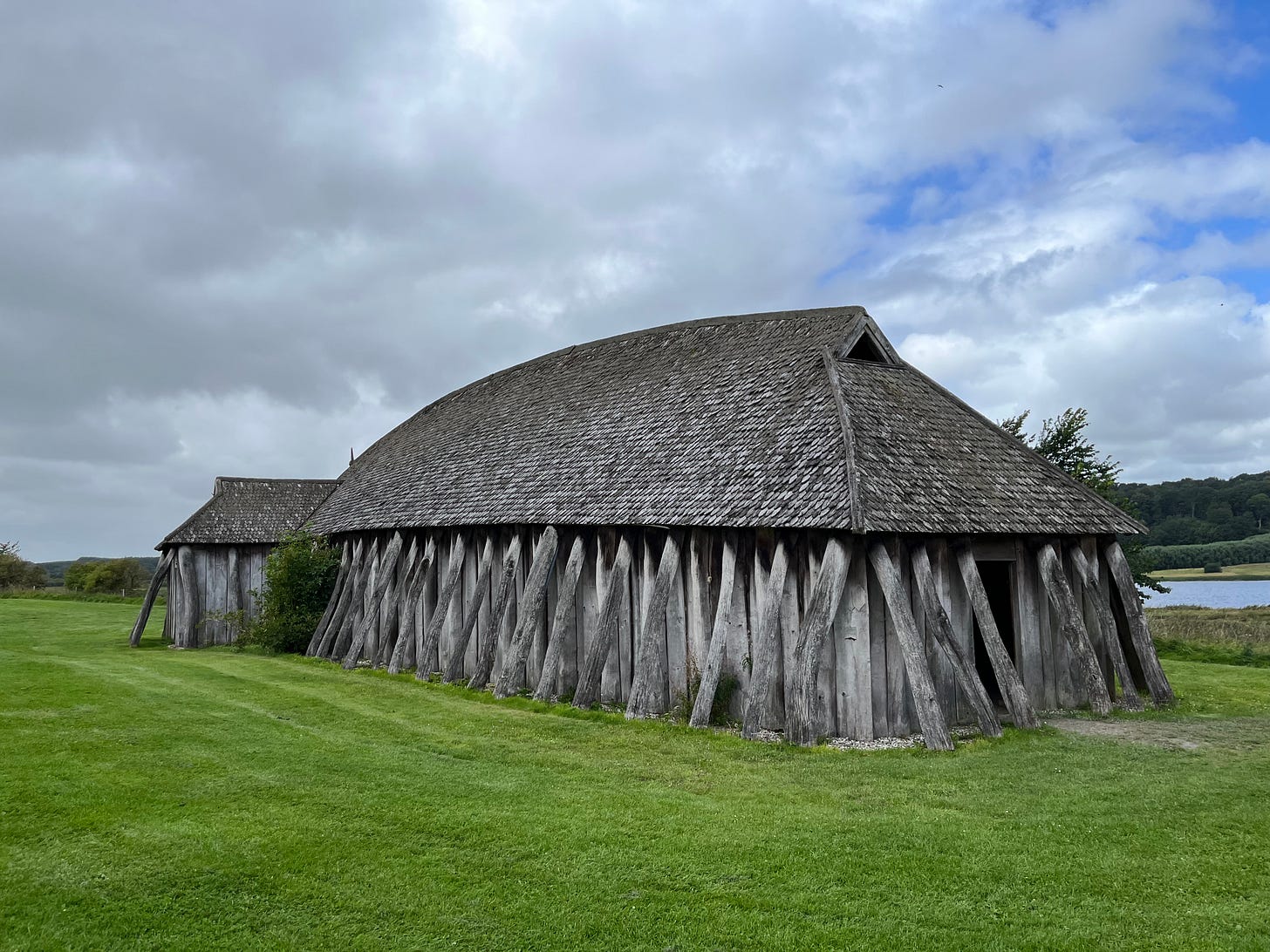
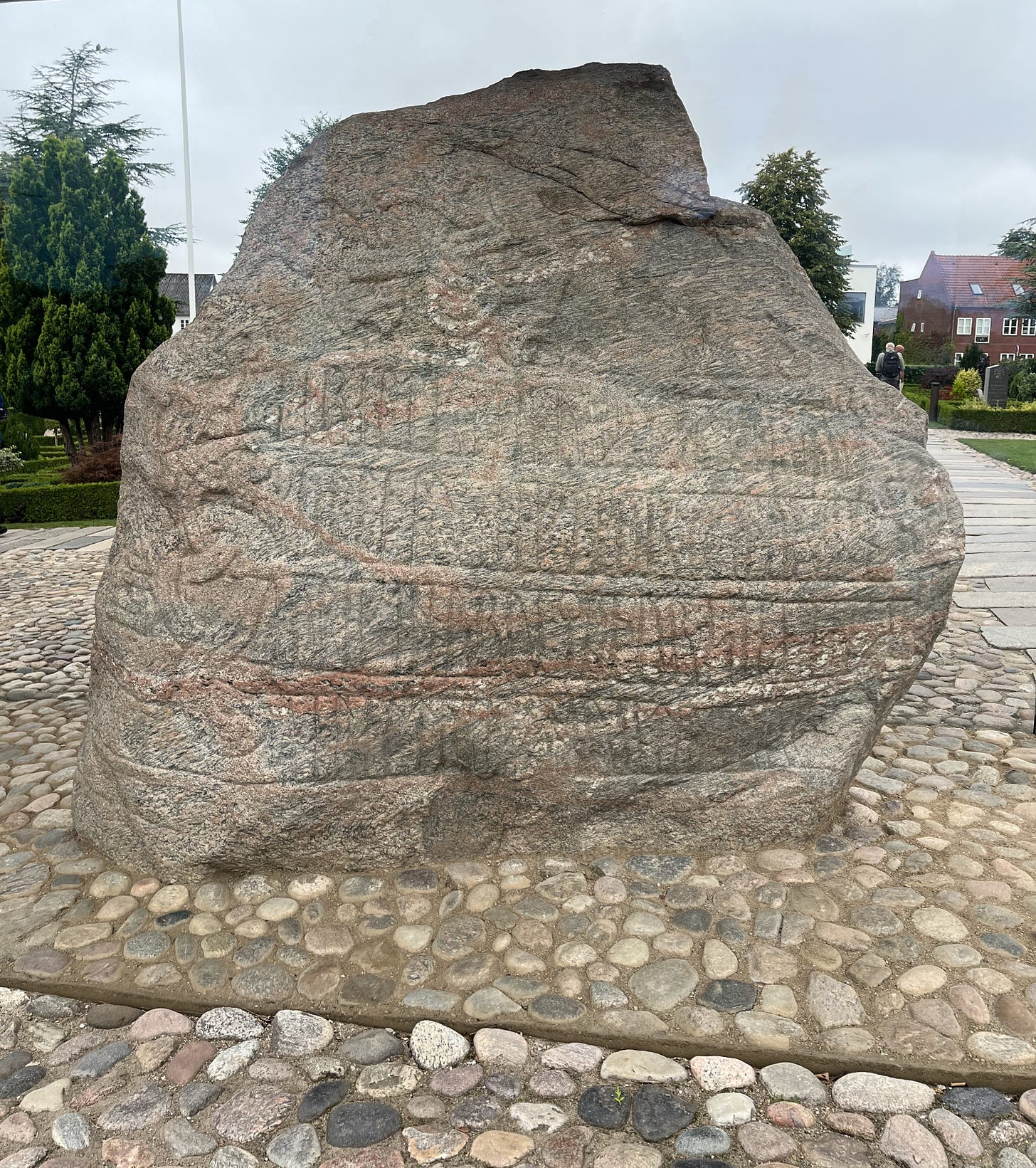
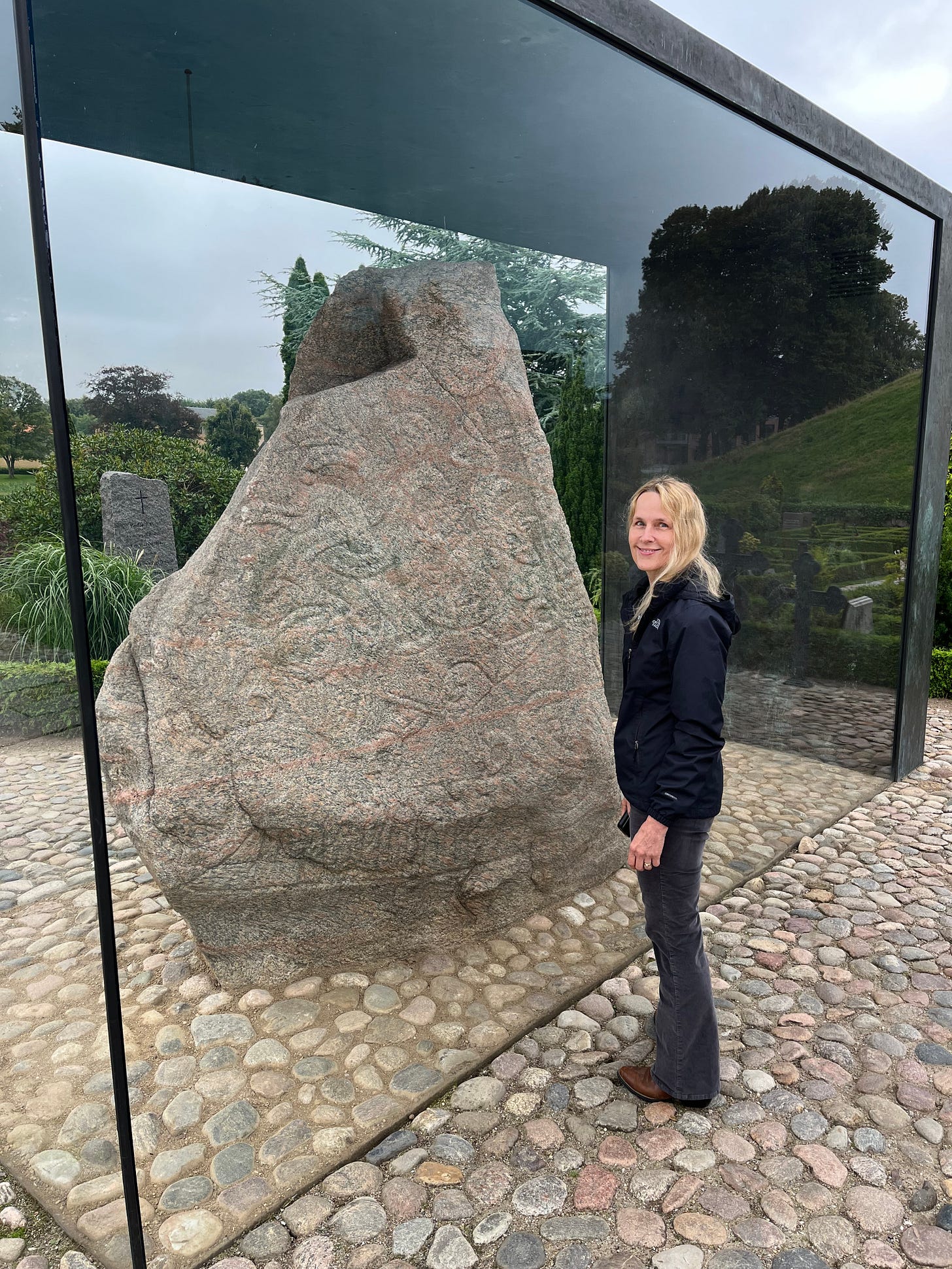

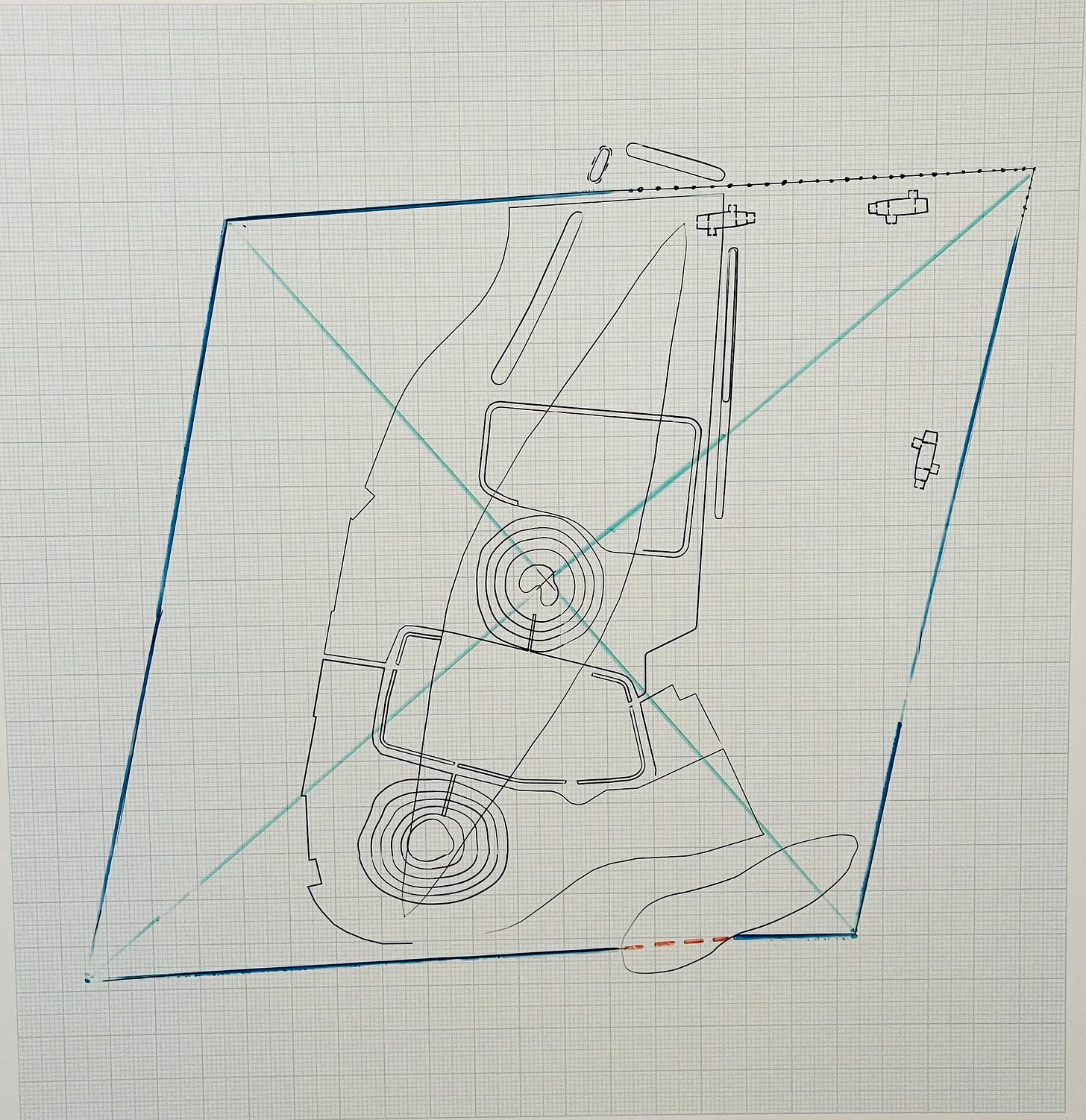
That's a new one I've never heard! The answer I suppose is that it could be a contender just as any other hypothesis, since we just don't know and without some written evidence coming to light to tell us, we have no way of knowing. I'm afraid this one will probably stay a mystery. Thanks for reading and the comment!
I heard the moniker "bluetooth" or "blue-teeth" was attributed to his love of blueberries? Or is that just a convenient myth?